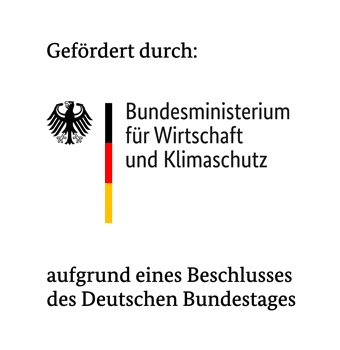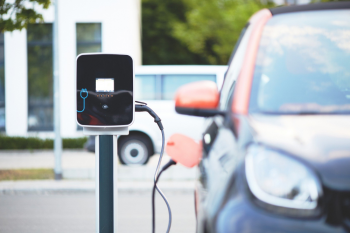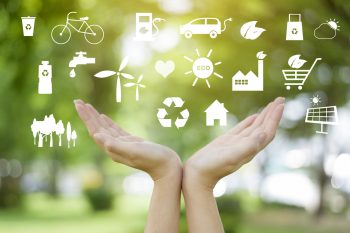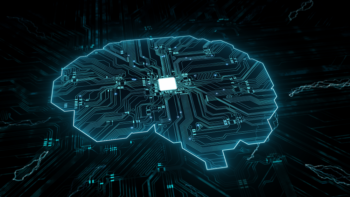Where Does our Regional and Green Electricity Come from?
Awareness of sustainability and regionalism is increasing in many areas of life. Therefore, it is only logical that more information about the origin of electricity and the corresponding CO2 emissions should also be passed on to end consumers when it comes to the supply of electricity.
But from which sources does the electricity come if it is distributed as regionally as possible? Especially as the availability of renewable generation remains limited?
Figure 1 shows the self-consumption rate as well as the surplus rate of German municipalities, i.e., the share that is generated within a municipality by renewable energies (RE) and is consumed again directly on site in the same period (self-consumption) or the share that cannot be consumed directly (surplus). These values were calculated based on regional RE generation and consumption in a one-hour resolution. Generation from conventional energy sources was not considered in this analysis. In addition, a simplified assumption is made that, as suggested in [1], green power quantities are also green power certificates at the same time, since each kilowatt-hour of electricity generation is also associated with information about its type and origin.

The self-consumption rate (left) shows that a large part of the municipalities can consume their RES-E themselves. This is especially the case where little generation meets a lot of consumption (e.g. in the Ruhr area). These are importers of green power, which is clear from the low surplus ratio (right). In particular, wind-rich communities in the north and north-east and some sun-rich communities in the south act as exporters of green power. Overall, 52.9% of the green electricity generated in Germany is not directly consumed in the municipality where it is generated.
In order to analyze how these surpluses and thus also their certificates can be redistributed (on balance), a model was developed within the framework of the InDEED project (funding code 03EI6026A). The electricity generation by energy source according to [2] and [3] is distributed to the municipalities in a top-down approach based on the installed capacity of RE plants (as of 2019; [4], [5], [6]) and transformed into hourly generation series using regionalized load profiles. Based on the number and the specific electricity consumption by household size, the consumption of private households is approximated by municipality, adjusted to data of AG Energiebilanzen e. V. by means of scaling, and finally converted into a load profile using standard load profiles [7], [8], [9]. For the tertiary and industrial sectors, the consumption is disaggregated to the municipality level based on the number of employees by economic sector and distributed to the hours using regionalized load profiles. The load profiles from all three sectors are summed to a total load profile per municipality.
In the context of the evaluation, the electricity consumption and the electricity generation (exclusively renewable energies) on the municipality level are used in a temporal resolution of one hour. Assuming that a municipality’s demand is primarily met from its own generation, the residual load of all municipalities can be calculated. When there is a surplus, the electricity is exported from the municipality, while at times of shortage due to own RE generation, the required electricity must be imported from other regions. The evaluation is done by using linear optimization to determine the least cost allocation of import and export municipalities for each hour. This is done under the assumption that low distances are associated with low costs and vice versa. This is based on the premise that electricity should be consumed as regionally as possible. This does not correspond to any load flow calculation. Line availability or load factors are not considered in the calculation. Rather, this corresponds to a balancing distribution of green power certificates that is also linked to the availability of green power over time and certain simplified grid-side constraints.
Funding
The research project InDEED is funded by the German Federal Ministry of Economics and Climate Protection (BMWK) (funding code: 03EI6026A).

Further information:
Literature:
| [1] | Bogensperger, Alexander et al.: Updating renewable energy certificate markets via integration of smart meter data, improved time resolution and spatial optimization in 17th International Conference on the European Energy Market (EEM2020). Stockholm, Sweden: Forschungsstelle für Energiewirtschaft e.V., 2020. |
| [2] | Nettostromerzeugung in Deutschland in 2019. In: https://www.energy-charts.de/energy_pie_de.htm?year=2019. (Abruf am 2020-06-26); Freiburg: Fraunhofer-Institut für Solare Energiesysteme ISE, 2020. |
| [3] | Status des Windenergieausbaus an Land in Deutschland. Varel: Deutsche WindGuard GmbH, 2019. |
| [4] | Marktstammdatenregister – Öffentliche Einheitenübersicht. In: https://www.marktstammdatenregister.de/MaStR/Einheit/Einheiten/OeffentlicheEinheitenuebersicht. (Abruf am 2019-03-07); Bonn: Bundesnetzagentur, 2019. |
| [5] | Heimerl, Stephan; Giesecke, Jürgen: Wasserkraftanteil an der elektrischen Stromerzeugung in Deutschland 2003 in: Wasserwirtschaft (WaWi). Wiesbaden: Vieweg+Teubner Verlag, 2004 |
| [6] | EEG-Anlagenstammdaten zur Jahresabrechnung 2015 in: https://www.netztransparenz.de/EEG/Anlagenstammdaten (Abruf 27.12.2016). Berlin, Dortmund, Bayreuth, Stuttgart: Übertragungsnetzbetreiber (ÜNB), 2016 |
| [7] | Zensus 2011 – Ausgewählte Ergebnisse. Wiesbaden: Statistisches Bundesamt, 2013 |
| [8] | Küster, Tom: Erhebung „Wo im Haushalt bleibt der Strom?“ – Stromverbrauchsanteile verschiedener Anwendungsbereiche in Ein- bis Fünf-Personen-Haushalten – 2015 und 2011 im Vergleich. Düsseldorf: EnergieAgentur.NRW, 2015 |
| [9] | Energiebilanz der Bundesrepublik Deutschland 2018: https://ag-energiebilanzen.de/index.php?article_id=29&fileName=bilanz18d.xls; Berlin: AG Energiebilanzen e.V. (AGEB), 2020 (überarbeitet: 2020). |


